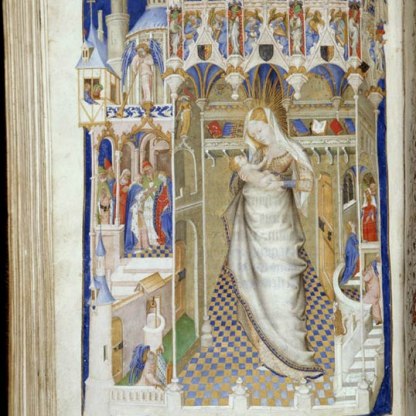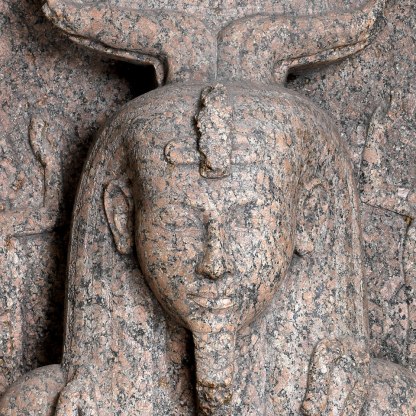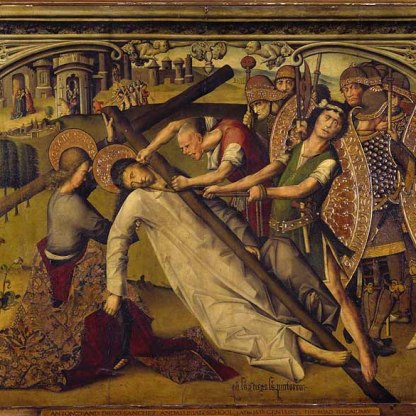The Star of Mary
The star on Mary’s cloak alludes to a popular medieval Latin hymn in which the Virgin is addressed: Ave maris stella... ('Hail, star of the sea ...)
Hail, star of the sea, / Kindly mother of God, / And eternal virgin, / Happy gate of heaven. /
Taking that ‘Ave’ / From the mouth of Gabriel / Establish us in peace, / Changing the name of Eva. /
Loose the chains of sinners / Bring light to the blind, / Drive away our ills, / Pray for every blessing. /
Show yourself a mother; / May he who, to be born for us / Became your son, / Receive our prayers through you. /
Incomparable virgin, /
Gentle beyond all others, / Make us, freed from sins, /
Gentle and chaste also.
The Latin word mare ('sea') was a pun upon the name Mary, and the phrase Stella maris is an mistranslation of the Hebrew form of her name, Miriam.
Mary as a star, giving guidance to sailors on a stormy ocean, became a popular metaphor for the help she gave to mankind on earth. The great fourteenth-century Italian poet Petrarch, wrote a powerful lyric on the subject:
Bright virgin, steadfast in eternity /
Star of this storm-tossed sea, /
Trusted guide of every trustful pilot, /
Turn your thoughts to the terrifying squall /
In which I find myself, alone and rudderless...
Interestingly, Stella maris was originally an epithet of the goddess Isis in Roman religion. Like Mary, Isis was a divine mother with a very popular cult, and representations of her with her baby son Horus in Egyptian art to some extent influenced the way early artists showed the Virgin and Child.
Here is an example in the Fitzwilliam, dating from between 715 and 525 BCE [E.122.1954].
Other highlight objects you might like
Other pathways and stories you might like
Sign up to our emails
Be the first to hear about our news, exhibitions, events and more…






